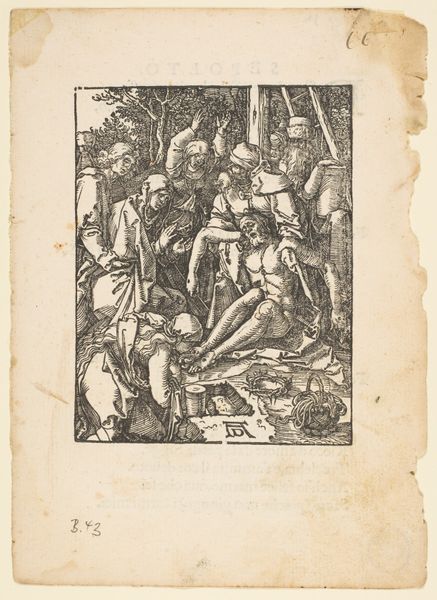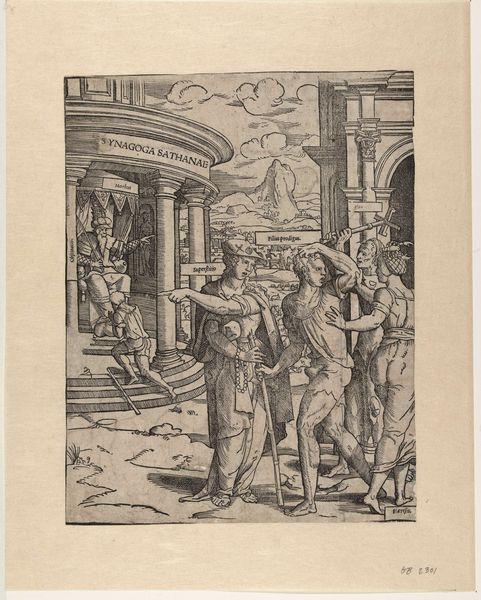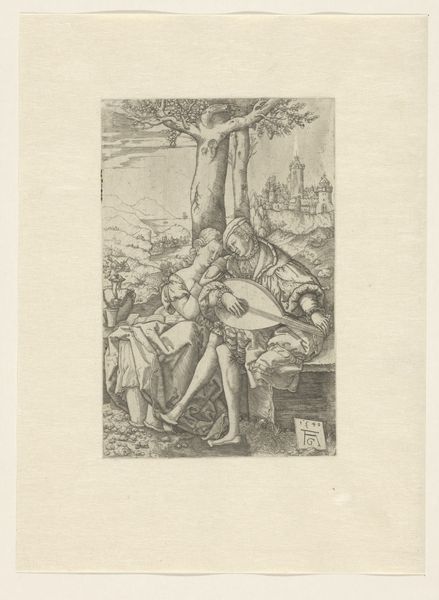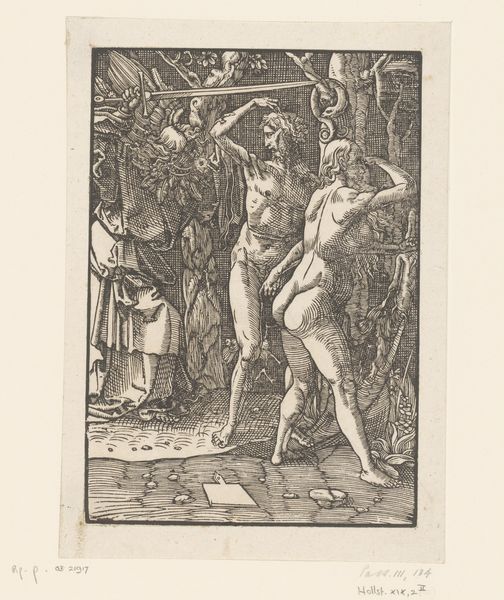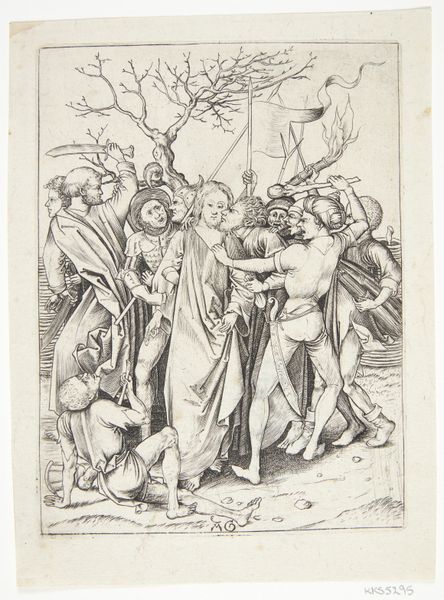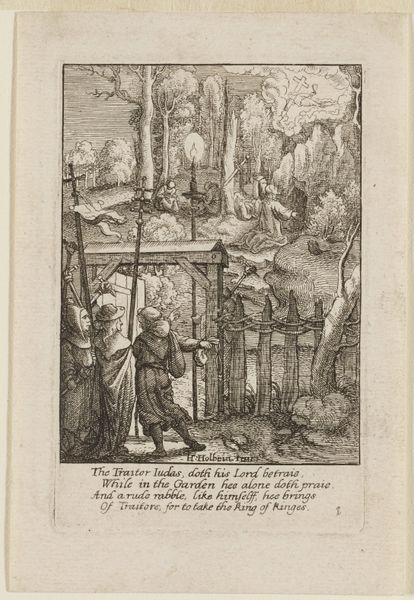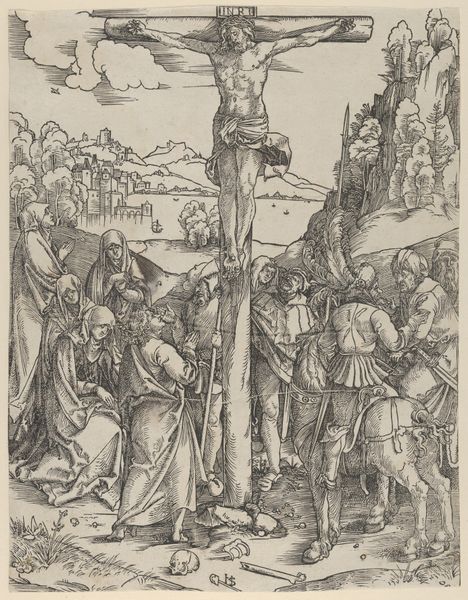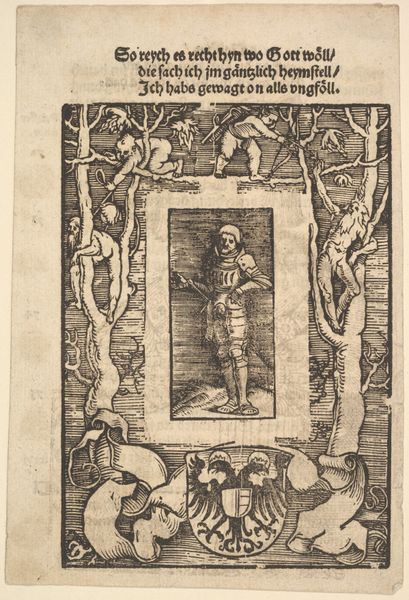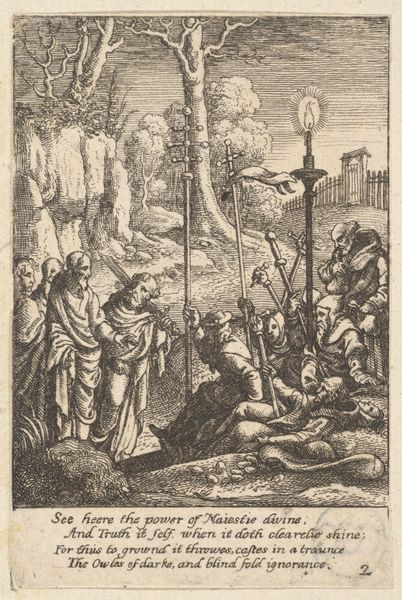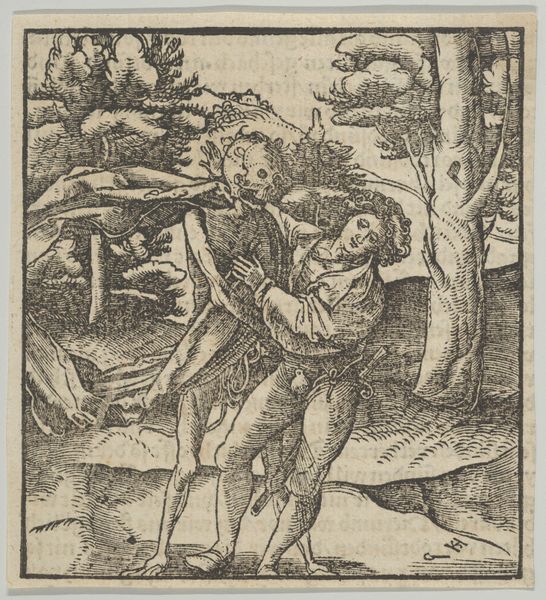
The Expulsion from Paradise, from "The Small Passion", edition Venice 1612
0:00
0:00
drawing, print, engraving
#
drawing
#
allegory
#
narrative-art
# print
#
figuration
#
11_renaissance
#
female-nude
#
line
#
history-painting
#
northern-renaissance
#
engraving
#
sword
#
male-nude
#
angel
Dimensions: sheet: 8 1/16 x 5 13/16 in. (20.5 x 14.7 cm) image: 4 7/8 x 3 7/8 in. (12.4 x 9.8 cm)
Copyright: Public Domain
Curator: We're looking at "The Expulsion from Paradise," an engraving by Albrecht Dürer, dating back to 1612. It's part of his series "The Small Passion." Editor: Immediately striking, isn't it? The figures are so tense, conveying a powerful sense of shame and regret. The sharp lines add to that feeling of anxiety and abruptness. Curator: Dürer, of course, lived during a time of great social upheaval. These sorts of biblical images would resonate deeply with contemporary concerns about morality and faith. I think it's crucial to situate Dürer within the context of religious and political anxieties in the early 17th century. Editor: Absolutely, but let's not ignore the representation of gender roles either. Eve’s figure is somewhat submissive, immediately following Adam. In this rendering, there is a deep and troubling history regarding depictions of female culpability in the Fall. Curator: Right, the composition does tell a story of blame, and Dürer utilizes his skill as an engraver to reinforce societal perceptions of the role that these biblical figures were meant to embody. Editor: The angel's imposing figure contrasts sharply with the vulnerable nudity of Adam and Eve, symbolizing lost innocence but also the blatant imbalance of power, both divine and patriarchal. Even the barren, spiky foliage surrounding the three feels unforgiving. This really serves to highlight their destitution, as well as their nakedness. Curator: Thinking about how art served public instruction, one has to think about how powerful such readily reproducible prints would be and their effect in solidifying the socio-political narrative for common people at that time. Editor: Indeed. I keep wondering about the gaze and perspective of different viewers through the ages. What was once a simple retelling becomes so charged with interpretations of agency and judgment through time. Curator: Precisely. The artwork reminds us that art never exists in a vacuum, especially art used in popular visual culture. Editor: Yes. A powerful reminder that art provides an image for our ongoing need for individual liberation, or even escape.
Comments
No comments
Be the first to comment and join the conversation on the ultimate creative platform.
